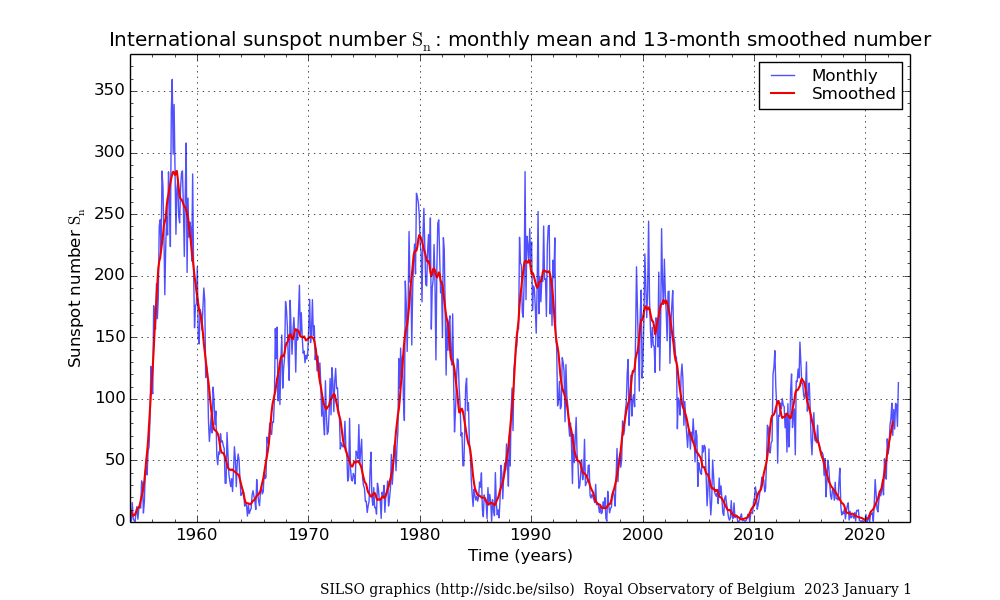

The Sun is a ball of gas that is interlaced by magnetic fields which arise in its interior. Gigantic magnetic loops break through the solar surface and reach out towards the high solar atmosphere or corona. When strong enough, the magnetic bundles leave a dark footprint on the surface of the Sun, the photosphere. Such a footprint is called a sunspot and is literally seen as a dark spot. Usually, sunspots come in pairs or larger groups: a magnetic loop has two or more footpoints forming a group of sunspots.
These magnetic bundles hold loads of solar energy. At some point in time, the magnetic loop becomes unstable and is not able to keep its energy. This energy can be released in the form of a light flash. This is called a solar flare and is a space weather event. It is the magnetic solar machinery that makes 'space weather'. To understand space weather, we need to understand the behaviour of its driver, the magnetic field. And this brings us to sunspots which are spots of intense magnetic field.

